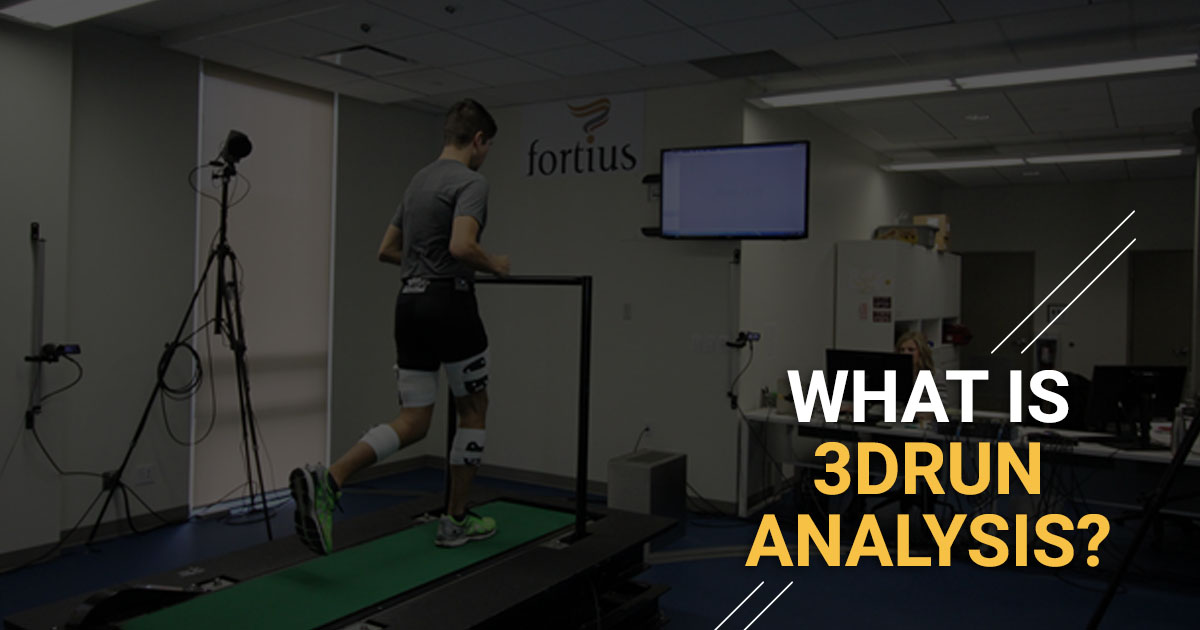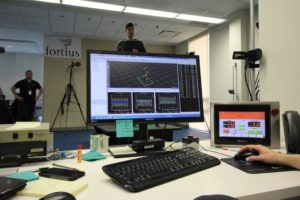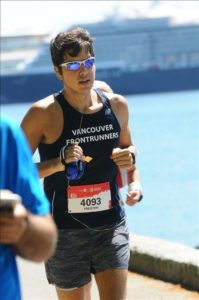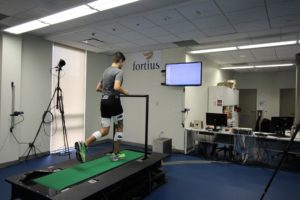
The Fortius Lab, located within Fortius Sport & Health in Burnaby, is a state-of-the-art human performance lab that is accessible to all levels of athletes. In collaboration with their integrated team of sport medicine and science practitioners, the focus of the lab is to provide a series of tests and analyses that support in injury management, injury prevention, and optimize performance for athletes and active individuals.
Earlier this month, we were given the opportunity to offer two free Fortius Lab analyses to a participant of our races. Preston, a runner of only three years, undertook the challenge of going through the tests so he could share his experience with our readers. First up was a 3DRun Analysis.
WHAT IS A 3DRUN ANALYSIS?
The 3DRun Analysis looks at a runner’s form in three different planes: the sagittal plane (side view); frontal plane (front and back); and the transverse plane (birds eye view). Having three perspectives on the movement of the body while running allows the practitioner to see the forces produced when the foot hits the ground, and any restricted or excessive movement that may lead to injury over time.
All of these angles are filmed with state-of-the-art 3D video technology during a one-hour session on a force treadmill. The data collected is analyzed by a biomechanist and a report is shared during a follow-up appointment where the practitioner shows the runner the pros and cons of their running form. A practical review is provided with suggestions to determine if their movement patterns may be associated with a past or current injury, could be altered to prevent future injury, or could lead to greater efficiency in movement and overall improved performance.
Now, we’ll turn it over to Preston to hear his experience firsthand.
PRESTON’S STORY
Over the past 3 years my fitness goals have shifted dramatically. My journey started about 3 years ago with a desire to lose weight and improve my health after a break-up. As I began to see results I started getting curious about my potential. After losing approximately 98 lbs and vastly improving my cardio I met an experienced runner who invited me on my first 10K run and I was hooked.
 My first goal was to complete a 10K in under an hour which I did (barely) in the spring of 2015. I ran my first half-marathon 2 months later with a goal time of 2 hours and missed it by a few minutes, but I knew I enjoyed the training and I was able to break the 2-hour mark at another race later in 2015. By the end of 2015 my times plateaued without the experience or knowledge of how to train for speed. I knew I enjoyed hitting the pavement and I ran frequently throughout the week but most of my half marathon times over the next 8 months were consistent at around 2 hours.
My first goal was to complete a 10K in under an hour which I did (barely) in the spring of 2015. I ran my first half-marathon 2 months later with a goal time of 2 hours and missed it by a few minutes, but I knew I enjoyed the training and I was able to break the 2-hour mark at another race later in 2015. By the end of 2015 my times plateaued without the experience or knowledge of how to train for speed. I knew I enjoyed hitting the pavement and I ran frequently throughout the week but most of my half marathon times over the next 8 months were consistent at around 2 hours.
I met my coach from Mile2Marathon in the summer of 2016 and while I didn’t know what I was in for at first (or how much more there was to training than just running consistently through the week) the changes to my workout routine began to pay dividends quickly. Over the last year I’ve knocked approximately 20 minutes off of my half-marathon time and reduced my recovery period after long runs significantly.
PRESTON’S 3DRUN ANALYSIS
As someone who’s never seen himself run before this experience, I didn’t know what to expect. Seeing so many cameras pointing at the treadmill when I arrived was a bit intimidating at first, however the staff were amazing at putting me at ease and explaining what they were looking for each step of the way.
I’ve always liked data and was interested in the science behind the testing so I appreciated the time they took explaining the different measurements and tests that were being performed. Once the treadmill started it was easy to forget about the cameras and sensors and just run (which was one of my favourite parts of the test). I had just finished my second marathon 9 days before the testing and this was my first hard workout since the race so it felt great to get my legs going at half-marathon rather than marathon pace. After a warm-up, we accelerated to my half-marathon pace and before I knew it the treadmill was slowing down and we had the data that we needed.
 The experience reminded me of animation work that friends have done using similar motion capture technology but I never considered myself a serious enough runner to explore it on my own; I always thought this level of testing was reserved for elite athletes but it was surprisingly accessible.
The experience reminded me of animation work that friends have done using similar motion capture technology but I never considered myself a serious enough runner to explore it on my own; I always thought this level of testing was reserved for elite athletes but it was surprisingly accessible.
MY RESULTS
I was impressed by the number of practical recommendations that came up when we reviewed my results a few days after testing, but most importantly I was glad that no critical issues were identified that could lead to injury. I’ve been fortunate through my first 2 years as a runner to have avoided major injuries so my main goal coming out of this testing was to identify areas to focus on for injury prevention.
Runners I talk to always focus on their shoes and while they are an important part of your running gear it was exciting that the recommendations coming from the testing were not footwear focused. From specific muscle groups I could target, to cues and drills that I could try to improve my form, the tangible takeaways that were identified were impressive. I’m excited to see the impact they have as I implement them into my workout this summer as I train for my next half-marathon.
ENTER NOW TO WIN A FREE 3DRUN ANALYSIS
What know learn how to improve your form? Like, comment, or share our Facebook, Twitter, or Instagram posts on 3DRun Analysis for a chance to win a free 3DRun Analysis!
To learn more about the Fortius Lab and 3DRun and Walk Analyses, visit their website and follow them @FortiusCentre







